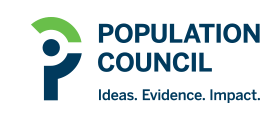Experiences of health care providers with integrated HIV and reproductive health services in Kenya: A qualitative study
Document Type
Article (peer-reviewed)
Publication Date
2013
Abstract
Background: There is broad consensus on the value of integration of HIV services and reproductive health services in regions of the world with generalised HIV/AIDS epidemics and high reproductive morbidity. Integration is thought to increase access to and uptake of health services; and improves their efficiency and cost-effectiveness through better use of available resources. However, there is still very limited empirical literature on health service providers and how they experience and operationalize integration. This qualitative study was conducted among frontline health workers to explore provider experiences with integration in order to ascertain their significance to the performance of integrated health facilities. Methods: Semi-structured in-depth interviews were conducted with 32 frontline clinical officers, registered nurses, and enrolled nurses in Kitui district (Eastern province) and Thika and Nyeri districts (Central province) in Kenya. The study was conducted in health facilities providing integrated HIV and reproductive health services (post-natal care and family planning). All interviews were conducted in English, transcribed and analysed using Nvivo 8 qualitative data analysis software. Results: Providers reported delivering services in provider-level and unit-level integration, as well as a combination of both. Provider experiences of actual integration were mixed. At personal level, providers valued skills enhancement, more variety and challenge in their work, better job satisfaction through increased client-satisfaction. However, they also felt that their salaries were poor, they faced increased occupational stress from: increased workload, treating very sick/poor clients, and less quality time with clients. At operational level, providers reported increased service uptake, increased willingness among clients to take an HIV test, and reduced loss of clients. But the majority also reported infrastructural and logistic deficiencies (insufficient physical room space, equipment, drugs and other medical supplies), as well as increased workload, waiting times, contact session times and low staffing levels. Conclusions: The success of integration primarily depends on the performance of service providers which, in turn, depends on a whole range of facilitative organisational factors. The central Ministry of Health should create a coherent policy environment, spearhead strategic planning and ensure availability of resources for implementation at lower levels of the health system. Health facility staffing norms, technical support, cost-sharing policies, clinical reporting procedures, salary and incentive schemes, clinical supply chains, and resourcing of health facility physical space upgrades, all need attention. Yet, despite these system challenges, this study has shown that integration can have a positive motivating effect on staff and can lead to better sharing of workload - these are important opportunities that deserve to be built on.
Recommended Citation
Mutemwa, Richard, Susannah Mayhew, Manuela Colombini, Joanna Busza, Jackline Kivunaga, and Charity Ndwiga. 2013. "Experiences of health care providers with integrated HIV and reproductive health services in Kenya: A qualitative study," BMC Health Services Research 13(1): Article 18.
DOI
10.1186/1472-6963-13-18
Language
English

